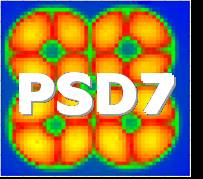Speaker
Mr
Derek Ives
(UK Astronomy Technology Centre, Edinburgh)
Description
The technology of Infrared detectors has made significant advances
over the last decade evolving from their small size and number of
pixels to the present large format 2k x 2k pixel devices. These
large format near infrared detectors (1 – 2.5µm) are now routinely
available to the astronomical community and are based on HgCdTe
grown by either an LPE or MBE process on silicon or CdZnTe
substrates. The performance of these devices, such as quantum
efficiency, dark current generation and read noise etc. has also
been significantly improved. The advent of these devices in buttable
packages has prompted the build of large focal plane mosaics for
wide field imaging in which the U.K. is a world leader. Four Hawaii-
2 (2k x 2k) detectors mounted in a 2 x 2 sparse mosaic have recently
been commissioned in the Wide Field Camera at U.K.I.R.T. on Hawaii.
More ambitiously, the VISTA IR camera currently being built in the
U.K. for an ESO telescope in Chile, will have a sparse mosaic of 16
(2k x 2k) VIRGO detectors mounted at its focal plane. We present
details of the performance and characteristics of the Hawaii-2 and
VIRGO detectors based on test results measured at the UKATC. We will
also present details on the next generation of detectors.
Author
Mr
Derek Ives
(UK Astronomy Technology Centre, Edinburgh)

